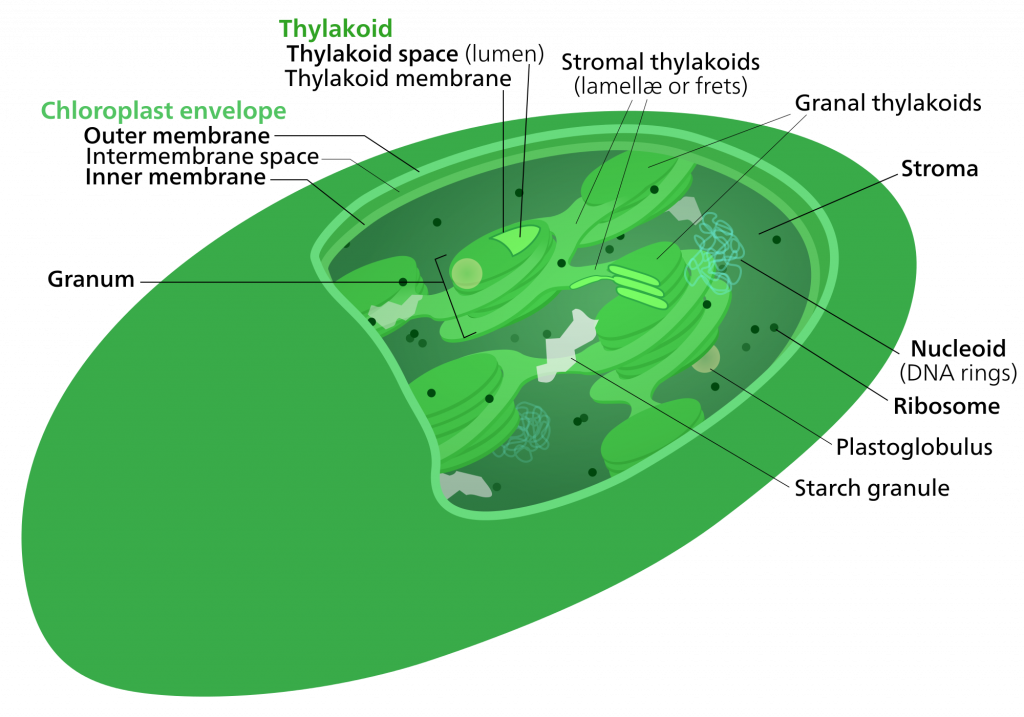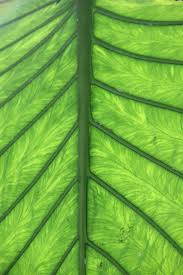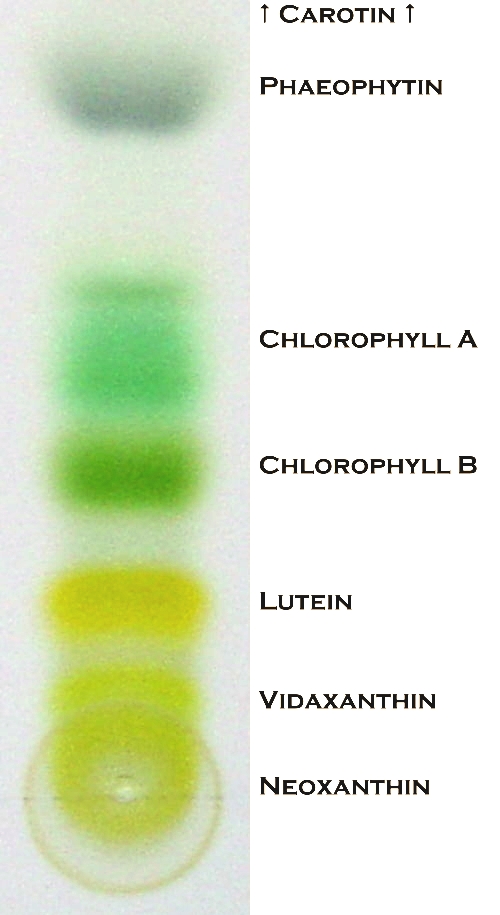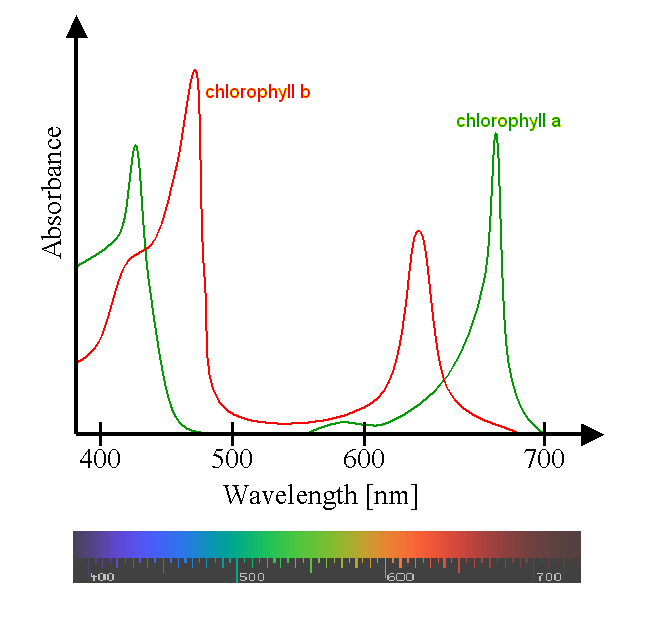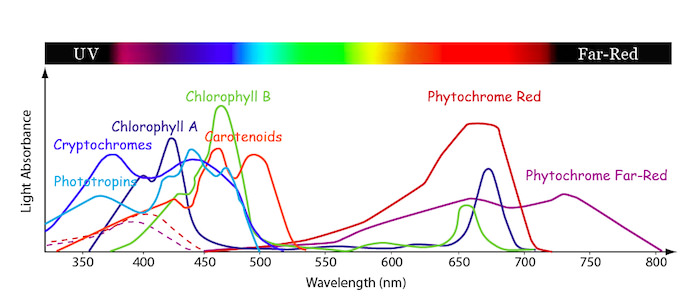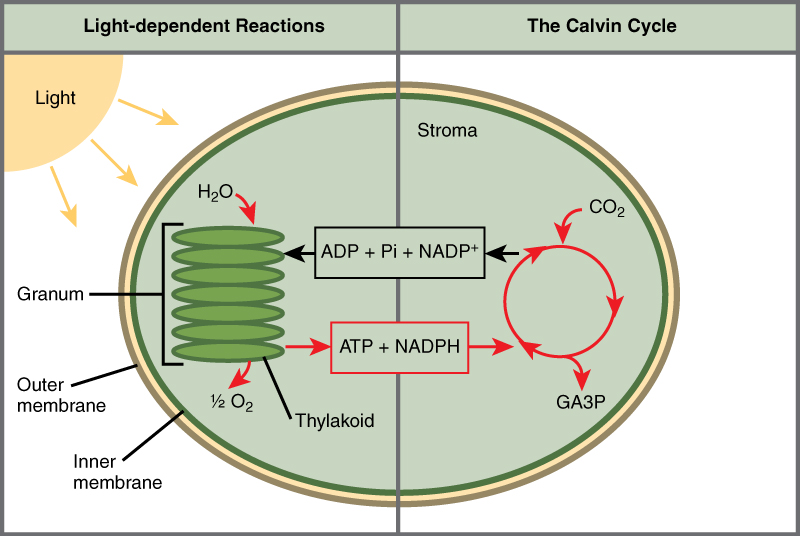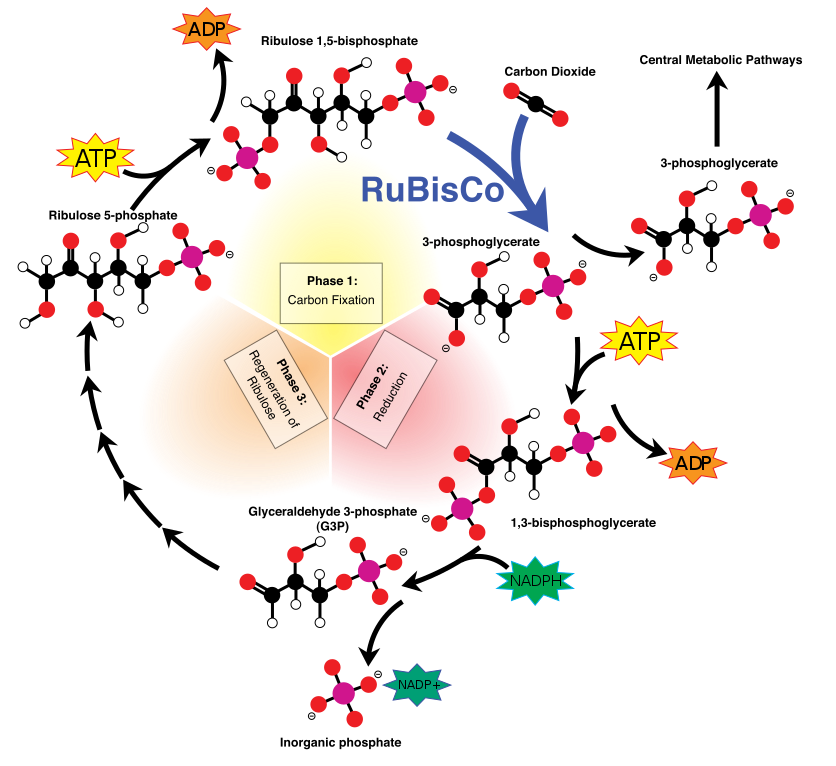Contents
Photosynthesis
Photosynthesis
Photosynthesis is a two-stage reaction: the light-dependent (LDR) and light-independent reaction (LIR). These reactions both occur within the chloroplast of a plant cell, but in different locations. The LDR occurs on the thylakoid membranes or grana, and the LIR occurs in the stroma.
Chlorophyll
Chlorophyll is located in the photosystems on the thylakoid membrane and is a mix of colored proteins that can absorb light. There are 5 key closely related pigments, but chlorophyll a is the most abundant. Below are the 5 pigments and the color they appear.
- Chlorophyll a = blue/green (found in all plants)
- Chlorophyll b = yellow/green
- Carotene = orange
- Xanthophyll = yellow
- Phaeophytin = grey
There are different proportions of each pigment in leaves, which gives leaves slightly different colors. As each pigment absorbs a different wavelength of visible light, this maximizes the spectrum of visible light that the plant can absorb, and therefore increases the amount of light energy absorbed.
The pigments in chlorophyll can be isolated using chromatography. The pigments are added to chromatography paper, which is placed in a solvent. The solvent dissolves the pigments, and the more soluble the pigment, the further up the chromatography paper it will move. This can be converted into an Rf value, a way to then compare and identify pigments in chromatography, using the formula below.
Rf value = Distance moved by pigment from origin to center of pigment spot / Distance from origin to solvent front
Light Dependent Reaction (LDR)
This is the first stage of photosynthesis and it requires light. The purpose of this stage is to use light energy and water to create ATP and NADPH, which can then be used in the light-independent stage. This occurs in three key stages:
- Photolysis. This is when light energy is absorbed by chlorophyll in photosystem II and splits water into oxygen, H+ and e-. The H+ is picked up by NADP to form NADPH and used in the LIR. The e- are passed along a chain of electron carrier proteins. The oxygen is either used for respiration or diffuses out of the leaf through the stomata.
- Photoionization of chlorophyll. This is when light energy is absorbed by the chlorophyll and the energy results in electrons becoming excited and raising up an energy level to leave chlorophyll. Therefore, the chlorophyll has been ionized by light.
- Chemiosmosis. The electrons that gained energy and left the chlorophyll move along a series of proteins embedded within the thylakoid membrane. As they move along, they release energy and some of the energy from electrons is used to pump the protons from photolysis across chloroplast membranes. The protons pass through the enzyme ATP synthase, which results in the production of ATP. The protons combine with the co-enzyme NADP to become NADPH. Because the protons move from a high to low concentration gradient, this is known as chemiosmosis.
Light-Independent Reaction (LIR)
The light-independent reaction is a cycle, the Calvin cycle. It uses carbon dioxide, reduced NADP, and ATP to form a hexose sugar. The ATP is hydrolyzed to provide energy for this reaction, and the NADPH donates the hydrogen to reduce molecules GP in the cycle. The Calvin cycle occurs in the stroma, and this fluid contains the enzyme RuBisco, which catalyzes this reaction. This stage is temperature-sensitive due to the fact it involves an enzyme.
The cycle shows that the carbon dioxide reacts with ribulose bisphosphate (RuBP) to form two molecules of glycerate 3-phosphate (GP), a 3-carbon compound. This reaction is catalyzed by the enzyme rubisco. To reduce this GP into triose phosphate (TP), ATP and NADPH from the light-dependent reaction are used. Some of the carbon from TP leaves the cycle each turn to be converted into useful organic substances. The rest of the molecule is used to regenerate RuBP, with the energy from ATP. While glucose is the product, this monosaccharide can join to form disaccharides such as sucrose, and polysaccharides such as cellulose and starch. It can also be converted into glycerol and therefore combine with fatty acids to make lipids for the plant. Calvin's experiment examined the products in the LIR using radioactive carbon. Carbon dioxide that is radioactively labeled is inserted, allowing the carbon molecules to be labeled and traced. He would then measure the amount of radioactive GP and RuBP under different conditions, mainly in the light and dark, as a way to prove which factors impact the LIR.
Limiting Factors
Any factor that reduces the rate of photosynthesis is called a limiting factor. These could be temperature, carbon dioxide concentration, or light intensity. For maximum photosynthesis, and therefore plant growth, common agriculture practices incorporate techniques to remove limiting factors. These range from growing plants under artificial lighting to maximize the light intensity, heating a greenhouse to increase the temperature, and burning fuel, such as paraffin burners, to release more carbon dioxide. The extent that each technique is used needs to be considered in terms of profit. If the extra growth from photosynthesis is minimal, it will not be cost-effective to pay for heating/lighting/fuel.
- What is the role of the pigments in plants?
- Your answer should include: Absorb / light / energy
- What are the two sets of reactions in photosynthesis?
- Your answer should include: Light / dependent / independent
- Where does the LDR occur?
- Your answer should include: Thylakoid / membrane
- What is photolysis?
- Your answer should include: Splitting / of / water
- What is photoionization?
- Your answer should include: Electrons / leaving / chlorophyll
- What is chemiosmosis?
- Your answer should include: H+ / ATP synthase
- Why is NADPH needed from the light-dependent stage?
- Your answer should include: Electron / GP / TP
- Why is ATP needed?
- Your answer should include: Reduce / GP / TP
- This stage is temperature-dependent. Suggest why.
- Rubisco
- How many carbon atoms do RuBP, GP, and TP have?
- Your answer should include: 5 / 3 / 3
- If CO2 was available, but the lights were switched off, what would happen?
- Your answer should include: RuBP / increase / GP / decrease

